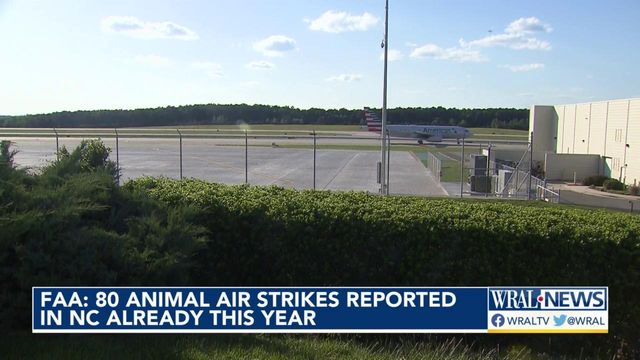RDU takes steps to reduce bird strikes that frighten travelers
The FAA said there have been 80 reports of animal airstrikes in North Carolina this year, including eight at Raleigh-Durham International Airport.
Posted — UpdatedYour browser doesn't support HTML5 video.
Federal Aviation Administration data shows in 2021, there were more than 15,000 strikes with wildlife at 708 airports.
"This is a very common issue that's dealt with daily in the aviation industry,” said pilot and airplane mechanic Mike Borrero.
The FAA said there have been 80 reports of animal airstrikes in North Carolina this year, including eight at Raleigh-Durham International Airport.
“Large bird populations are increasing, so the industry is constantly grappling with this,” said Guzzetti Aviation Risk Discovery President Jeff Guzzetti.
According to the federal agency, about 97% of reported airstrikes are birds. However, in November 2022, a Southwest Airlines flight returned to the airport just after takeoff after the plane hit a coyote on the runway.
"Most times when there is a bird strike it just involves cleaning the remains and doing an inspection, and usually, it is uneventful and a return to service,” Borrero said.
The current page does not support this embedded media. To view this story with fully functioning media, please visit this page on our full site.
The Raleigh-Durham Airport Authority works with local, state and federal agencies to reduce wildlife hazards at and around the airport. RDU tries to take a proactive approach to help deter wildlife from entering airport property.
RDU’s wildlife management practices include:
- Maintain airfield grass at the U.S. Department of Agriculture at a recommended height of 6 -14 inches to prevent birds from flocking on the airfield
- Perimeter fence replacement to prevent wildlife from accessing the airfield
- Geese relocation coordinated with the U.S. Department of Agriculture
- Covering ponds on airport property with materials to deter birds from congregating near the airfield
- Regular perimeter fence checks looking for signs of wildlife activity
- Coordinating with local university wildlife officials to identify endangered species and properly relocate them to safe habitats
- Planting only non-fruit producing trees so as not to attract birds
Related Topics
• Credits
Copyright 2024 by Capitol Broadcasting Company. All rights reserved. This material may not be published, broadcast, rewritten or redistributed.
